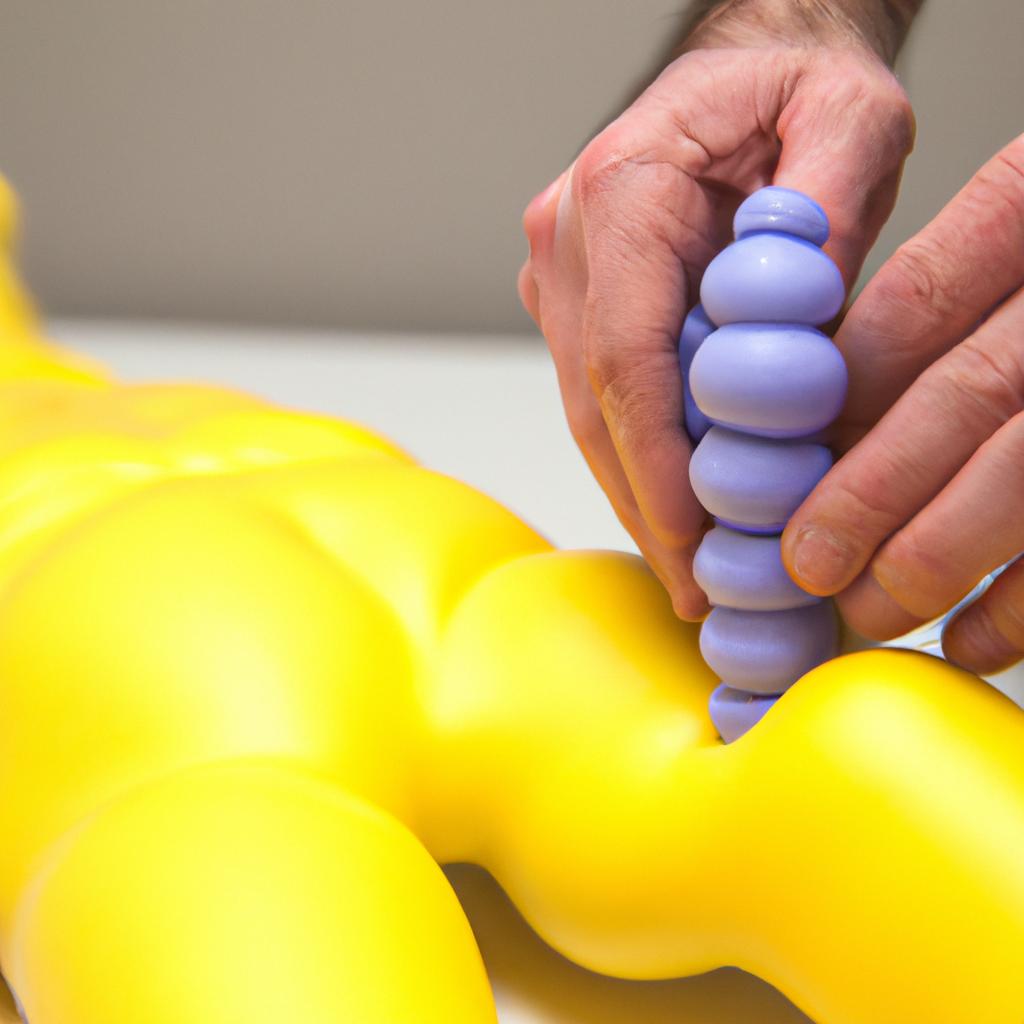**”Trigger Point Therapy for Athletes: Targeting Specific Muscle Groups to Enhance Performance and Prevent Injury”**
# Trigger Point Therapy for Athletes: Targeting Specific Muscle Groups to Enhance Performance and Prevent Injury
As athletes, we constantly push our bodies to the limits. Whether it’s during training or competition, the physical demands can lead to muscle tightness, soreness, and even injury. One effective method for maintaining peak performance and preventing injuries is trigger point therapy. This manual therapy targets specific muscle groups to release tension and improve muscle function, making it an invaluable tool for athletes. In this blog post, we will explore the principles of trigger point therapy, its benefits, and how to integrate it into your training routine.
## What is Trigger Point Therapy?
### Understanding Trigger Points
Trigger points, often referred to as muscle knots, are hyperirritable spots in skeletal muscle that can cause pain in specific areas of the body. These points are often the result of overuse, injury, or poor posture and can lead to reduced range of motion and muscle weakness.
### How Trigger Point Therapy Works
Trigger point therapy involves manual pressure applied to these tight areas to release tension and restore normal muscle function. By targeting these specific points, athletes can alleviate pain, enhance flexibility, and improve overall performance.
## The Benefits of Trigger Point Therapy for Athletes
### Enhanced Performance
One of the primary goals of trigger point therapy is to optimize muscle function. By releasing tension in tight muscles, athletes can experience improved range of motion and better overall performance. This is particularly crucial in sports that require agility, speed, and strength, as tight muscles can hinder movement efficiency.
### Injury Prevention
Trigger point therapy not only addresses existing issues but also plays a significant role in injury prevention. Regularly targeting trigger points can help maintain muscle elasticity and reduce the risk of strains or tears. Athletes who incorporate this therapy into their routine often report fewer injuries and shorter recovery times.
### Faster Recovery
For athletes, recovery is just as important as training. Trigger point therapy promotes blood flow to the affected muscles, facilitating the removal of metabolic waste and promoting healing. This expedited recovery process allows athletes to return to training and competition more quickly.
## Nutrition Tips to Support Trigger Point Therapy
### Stay Hydrated
Proper hydration is essential for muscle function and recovery. Dehydrated muscles are more prone to tightness and cramping. Aim to drink plenty of water throughout the day and consider electrolyte-rich beverages during intense training sessions.
### Fuel Your Body
A balanced diet rich in protein, healthy fats, and complex carbohydrates can provide the necessary nutrients for muscle health. Foods like lean meats, fish, nuts, whole grains, and plenty of fruits and vegetables can support muscle recovery and reduce inflammation.
### Consider Anti-Inflammatory Foods
Incorporating anti-inflammatory foods into your diet can help mitigate muscle soreness and promote recovery. Foods such as turmeric, ginger, fatty fish (rich in omega-3 fatty acids), and berries are excellent choices.
## Exercise Advice: Incorporating Trigger Point Therapy
### Self-Myofascial Release Techniques
Athletes can practice self-myofascial release using foam rollers or massage balls. Here’s a simple routine to get started:
1. **Foam Rolling**: Begin with major muscle groups like the quadriceps, hamstrings, calves, and back. Roll slowly over the muscle, pausing on any tight spots for 20-30 seconds.
2. **Massage Ball**: Use a massage ball to target smaller areas, such as the glutes, shoulders, and hips. Apply pressure to the trigger points and breathe deeply to facilitate relaxation.
### Professional Therapy Sessions
While self-care is beneficial, working with a qualified therapist can provide deeper relief. A professional can identify specific trigger points you may not be able to target on your own and apply techniques tailored to your needs.
## Health Benefits of Trigger Point Therapy
### Improved Flexibility
By releasing tight muscles, trigger point therapy can significantly enhance flexibility, allowing athletes to move more freely and efficiently. This increased range of motion can lead to better performance and reduced risk of injury.
### Pain Relief
Many athletes experience chronic pain due to muscle tightness and trigger points. Trigger point therapy can provide immediate relief and help manage pain over the long term, allowing for a more enjoyable athletic experience.
### Mental Well-being
Physical tension can often lead to mental stress. Engaging in trigger point therapy not only benefits the body but can also promote relaxation and reduce anxiety, contributing to better focus and mental clarity during training and competitions.
## Conclusion
Trigger point therapy is a powerful tool for athletes looking to enhance performance, prevent injury, and promote overall well-being. By understanding the principles of this therapy and incorporating it into your regular training routine, you can keep your muscles healthy, flexible, and ready to perform at their best. Pairing this therapy with proper nutrition and a balanced exercise regimen can create a holistic approach to athletic training that not only improves performance but also prolongs your athletic career. Embrace the benefits of trigger point therapy and take your athletic performance to new heights!















Post Comment